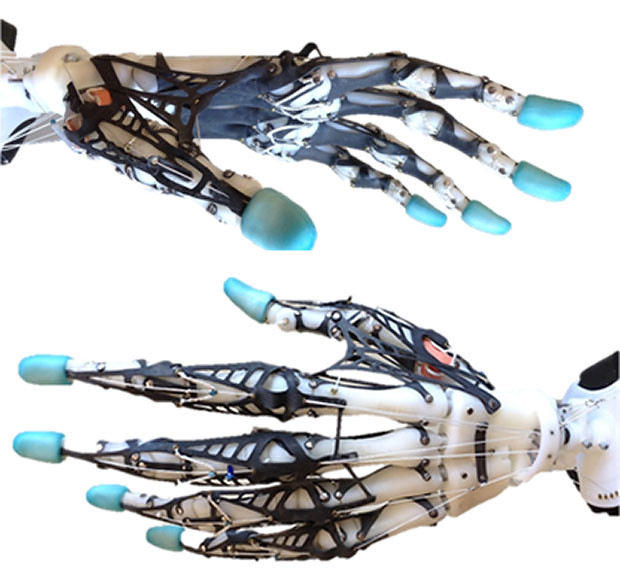Robotic prosthetic limbs are slowly making leaps and bounds in advancing the process of allowing those with missing limbs to regain mobility and functionality in their everyday lives. However, there are still some significant limitations in how advanced the prosthetic process is utilized and the methods used to replicate human movement. That’s all about to change thanks to two researchers from movement control laboratory at the University of Washington’s Department of Computer Science and Engineering.
ZME Science is reporting that two researchers, Zhe Xu and Emanuel Todorov, are looking into utilizing biomimetic robotics to emulate the human hand with 1:1 movement using a synthetic replicate. It may sound confusing but once you see it in action it’s very impressive. You can check out the demonstration with a short clip from Vimeo.
The main goal from Xu and Todorov is to literally recreate the human hand in the form of a biomechanical appendage, this includes the bone structure, the muscles, the tendons and functional electronic nerves to send signals for proper responses and reactions, as demonstrated in the video above.
According to Xu, they want to be able to advance robotic prosthesis so that it will eventually allow for 1:1 response timing and functionality, no different than how real humans utilize their real limbs, as noted in the ZME article, Xu states…
“The control of prosthetic hands essentially relies on human brain. Therefore the same neuroprosthetic technologies could be more effective if the design of the prosthesis could be more similar to its biological counterpart. Biocompatible materials can now be printed to form bone structures, biodegradable artificial ligaments have been used to replace the torn anterior cruciate ligaments, human muscles have been successfully cultivated inside petri dish, and peripheral nerves can also be regenerated given the right conditions. All of the these promising technologies require suitable scaffolds for the growth of grafted cells. We are going to collaborate with researchers from biology and tissue engineering to further explore its potential to serve as a bio-fabricated device/scaffold in the emerging fields of neuroprosthetics and limb regeneration”
Biomechanical limb regeneration sounds like something out of Deus Ex, eh? Well, it’s already real.
As noted in a report by Science Friday, scientists have been able to accurately 3D print living cells.
The article notes that scientists have been able to replicate ears, bone and muscle structures out of living cells using 3D printers. This process was hinted at by Xu in the quote above as something that they would need to collaborate on with other biologists in order to make biodegradable parts that intertwine living tissue with biomechanical prosthetic parts.
The organic material is what would allow for the biological mimetic properties to be applied to the robotic parts, which would effectively give near 1:1 movement between the wearer and the prosthetic. It would essentially allow scientists to regenerate limbs with a mix of synthetically generated organic material and robotic prosthetic limbs.
Already there are various institutes that regularly use 3D printers to print out affordable prosthetic limbs, now there is the addition of 3D printed cells and biomimetic bionics that can all be combined together to potentially make a working appendage that functions no different than a real life limb.
The future of limb replacement and limb regeneration is looking rather bright. Gamers who find themselves missing digits or appendages necessary to game with 1:1 precision mobility may soon have a solution to their problems in the form of biomimetic prosthesis.







